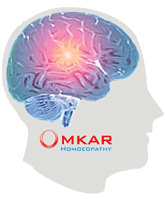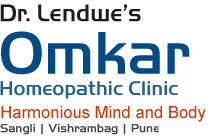The Homoeopathic Approach
A homoeopath studies an individual in two planes: The clinical plane & individual plane. In order to understand the peculiarity of the person, he takes the help of different physical, emotional, intellectual and subconscious peculiarities of the individual expressed through normal physiological & psychological functioning when he is in perfect health and notes the changes or deviations in his functioning when he is sick. For example, in the clinical condition of the pneumonia with pleural involvement chest pain, fever, cough etc constitute diagnostic (common) symptoms of the disease. Some patient with pneumonia feel very thirsty for cold water, are excessively chilly and want covering; further the chest pain in one person is better by lying on same side, as the pain while in another, is better while lying on the painless side. These are the peculiar or characteristic symptoms a homoeopathic physician is interested in, as these symptoms help him to form the totality which in turn helps in differentiating one remedy from the other. Thus a homoeopath has to be well trained and well versed in the basic disciplines like Anatomy, Physiology and Pathology as well as in clinical facts and skills and be able to integrate the clinical understanding with the knowledge of the constitution.
Thus symptoms are important for the homoeopath since they reveal the inner disturbance most accurately. Any move which interferes with this expression is fraught with danger since it aids the travel of the disturbance at deeper levels. Experienced clinician have noted the transition of allergic skin manifestation in childhood to an asthmatic state. They have also noted the state of alterations of the disease one manifestation to the other. Hahnemann made a deep study of this phenomenon and found the key to unlock the puzzle.
ASSESSMENT OF SUSCEPTIBILITY: THE KEY TO UNDERSTAND THE INDIVIDUAL RESPONSE that disease is of multi factorial origin is today a well known and accepted truth. It is not the organism alone which is responsible for an infection but the state of the system is equally contributory. We now know that the state of the Psycho-neuro-endocrine(PNE) system has an influence on the reticulo-endothelial system (RES) which in turn determines the expression of the disease. The ability of any biological system to respond to changes in the surroundings is termed as Susceptibility.
Failure in adaption puts an added strain on the system. Change in susceptibility is responsible for the nature, expression and pace of the disease. Different states of susceptibilities are seen when a disease passes from a state of dynamic disturbance in energies to functional-biochemical changes and on to structural alteration in the tissues- reversible and irreversible i.e. when the disease successively passes from the prodromal stage, stage of pre-localization localization of disease, stage of functional disturbance, stage of structural alteration which in turn travels from a reversible phase to irreversible phase leading to complications and sequelae. An accurate grasp of this changing susceptibility is crucial to select the most similar remedy and determine the manner in which it has to be administered.
Hereditary factors play a part in determining the stress response. Also important are the alterations brought about through resorting to various suppressive measures. The changes induced bring about a fundamental alteration in susceptibility and resulting disease expressions. Restoration of susceptibility would entail an unrolling of suppression often leading to a mistaken impression that Homoeopathy aggravates before curing. It is not Homoeopathy which is aggravating but the undoing of the suppression which throws up a strong reaction in the form of signs and symptoms.
The Homoeopathic system of medicine, is one of the fastest growing alternate medical system in the world. It is a fact that no single medical system can manage all the health care needs of society. Every system of medicine has its own areas of strength. The allopathic system has effective treatment options in the management of acute infections, accidents, emergency surgical conditions etc. The traditional Ayurveda is known for its efficacy in managing life style diseases, articular complaints etc. Homoeopathy has its unique strength in the treatment of allergic disorders, respiratory complaints, gastrointestinal conditions, skin disases, behavioural disorders etc.



